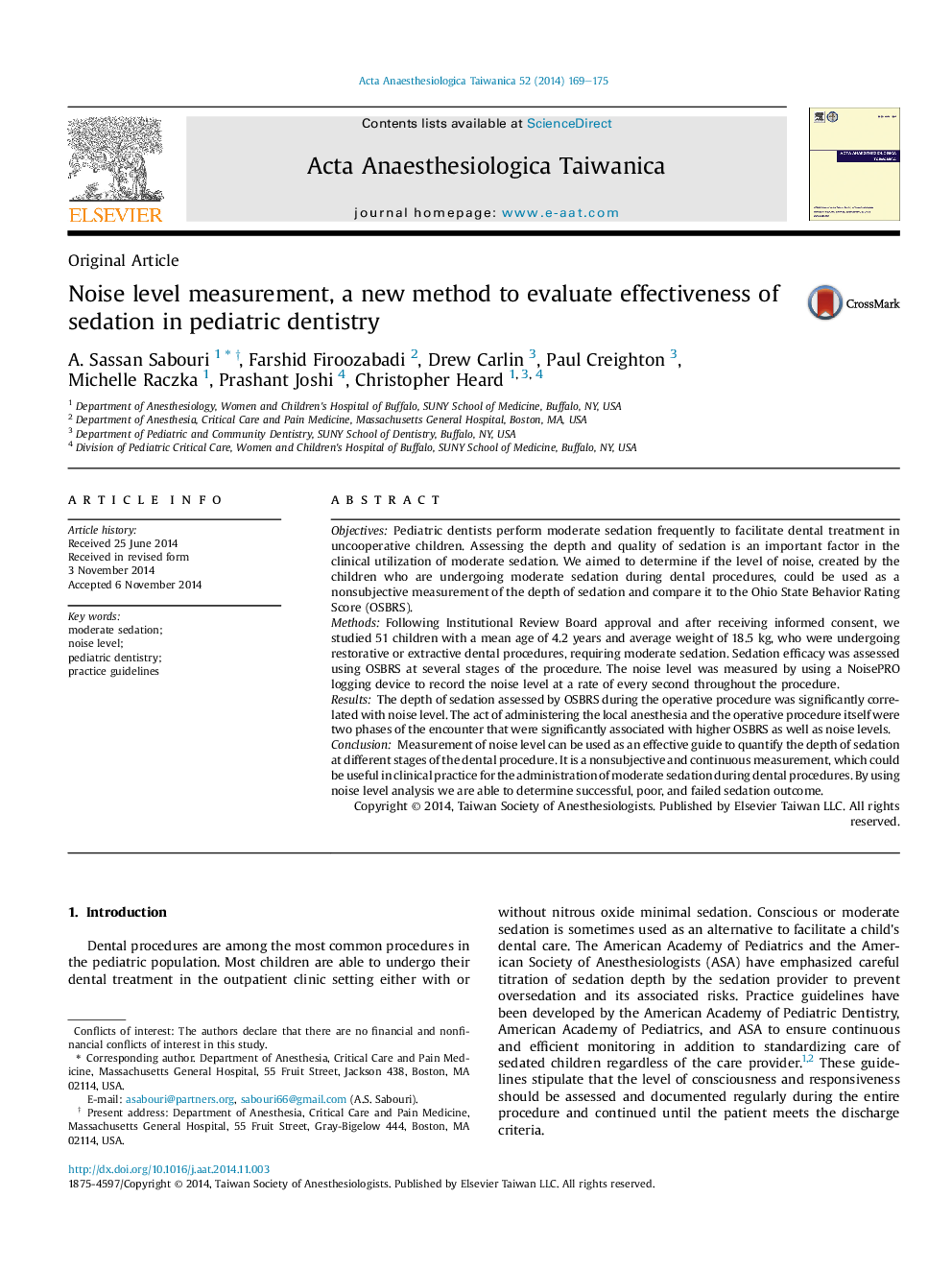| Article ID | Journal | Published Year | Pages | File Type |
|---|---|---|---|---|
| 2741374 | Acta Anaesthesiologica Taiwanica | 2014 | 7 Pages |
ObjectivesPediatric dentists perform moderate sedation frequently to facilitate dental treatment in uncooperative children. Assessing the depth and quality of sedation is an important factor in the clinical utilization of moderate sedation. We aimed to determine if the level of noise, created by the children who are undergoing moderate sedation during dental procedures, could be used as a nonsubjective measurement of the depth of sedation and compare it to the Ohio State Behavior Rating Score (OSBRS).MethodsFollowing Institutional Review Board approval and after receiving informed consent, we studied 51 children with a mean age of 4.2 years and average weight of 18.5 kg, who were undergoing restorative or extractive dental procedures, requiring moderate sedation. Sedation efficacy was assessed using OSBRS at several stages of the procedure. The noise level was measured by using a NoisePRO logging device to record the noise level at a rate of every second throughout the procedure.ResultsThe depth of sedation assessed by OSBRS during the operative procedure was significantly correlated with noise level. The act of administering the local anesthesia and the operative procedure itself were two phases of the encounter that were significantly associated with higher OSBRS as well as noise levels.ConclusionMeasurement of noise level can be used as an effective guide to quantify the depth of sedation at different stages of the dental procedure. It is a nonsubjective and continuous measurement, which could be useful in clinical practice for the administration of moderate sedation during dental procedures. By using noise level analysis we are able to determine successful, poor, and failed sedation outcome.
